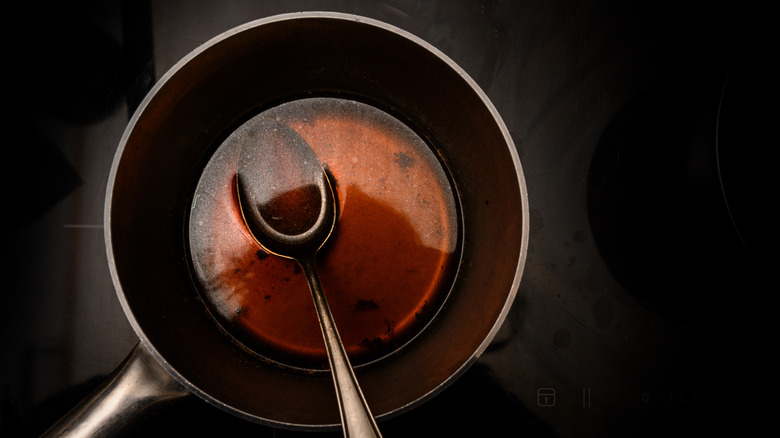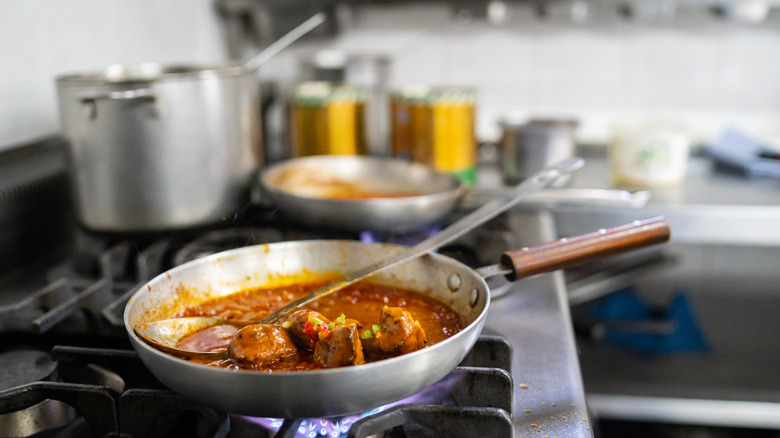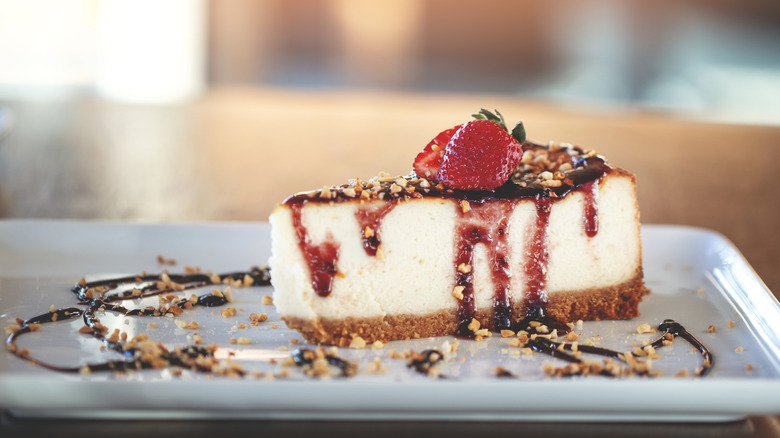How To Make A Reduction
If you are a cooking enthusiast, then you already know there are several basic techniques that are essential regardless of your skill level or type of cuisine. You know how to sauté, to boil, to stir fry, and to roast. But there is one technique that is often used, but we don't always know it: reduction. After all, you've probably heard of a red wine reduction.
Reducing something in culinary terms means simmering or boiling a liquid until its volume shrinks. It might sound fancy, but it's just a way to make flavors concentrated and sauces thicker by cooking out water. It is often a technique we use without even thinking about it, like simmering a gravy to thicken it, or boiling down the deglazing liquid of a pan of seared protein to make a "pan sauce." A reduction is like cooking's magnifying glass. And — best of all — you can use nearly any vehicle to make it, like broth, sauce, or even certain types of wine, which are simmered to become thicker and more intense in flavor.
Tips for making better reductions
Although reductions seem like a simple technique, there are a couple of tips that make creating a reduction easier. First, avoid high heat. Although it is tempting to turn the heat up on high and let the water boil off, you risk over-reducing the liquid and "burning" whatever else is left, making it bitter and unappetizing. So be patient. Reducing in a simmer takes time, so resist any urge to turn the heat up.
Additionally, since the goal is to create a thick reduction by evaporation, make sure you use the widest pot or pan possible to maximize the surface area. If you are reducing something such as a braising liquid, remove the meat from the liquid before reducing it to an au jus, so the heat will not overcook the meat, and the liquid has more surface area to evaporate.
Have a lot of liquid to reduce? You can discard some of it to speed up reduction time without sacrificing flavor. Finally, if the reduction is still too watery, you can always thicken it with a slurry. To create one, mix a teaspoon or less of cornstarch with cold water and stir vigorously before adding to the reduction. As the cornstarch solution boils, it will cause the liquid to thicken very quickly.
Reducing your liquids for better flavor (or storage)
Reducing a liquid is a simple and delicious way to add flavor to your daily cooking. For instance, after searing a pork chop, you can deglaze the pan with wine and stock and let it reduce. Once it is reduced by half, whisk in cold cubes of bouillon to create an emulsified sauce. Taste before adding seasoning. If you are planning on making a cheesecake, you can make a simple fruit reduction as a sauce by simmering juice, sugar, and orange zest until it is thick enough to be spooned over a slice of cake after chilling.
You can also use the reduction technique to help you maximize your fridge and freezer space when storing homemade stocks and broths. Simply gently simmer your leftover stock until it is half the volume before freezing or storing it in the fridge. When you are ready to make soup, add the same volume of water in a pan before adding your frozen and concentrated stock. The additional water returns the stock to its original strength, ready for use.



